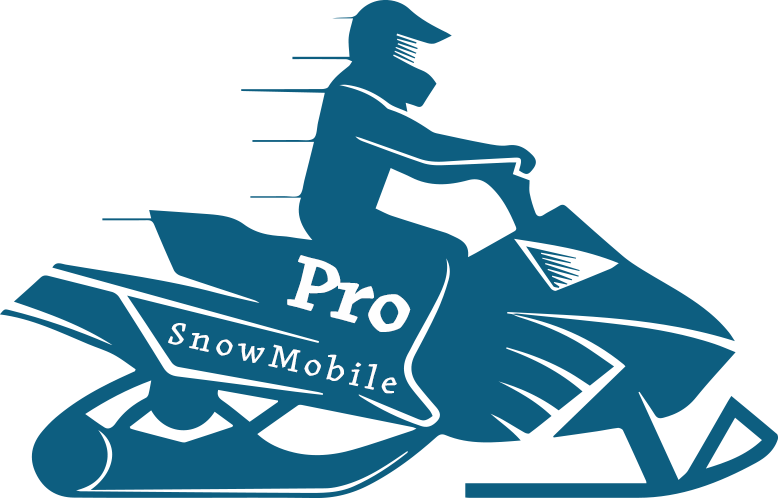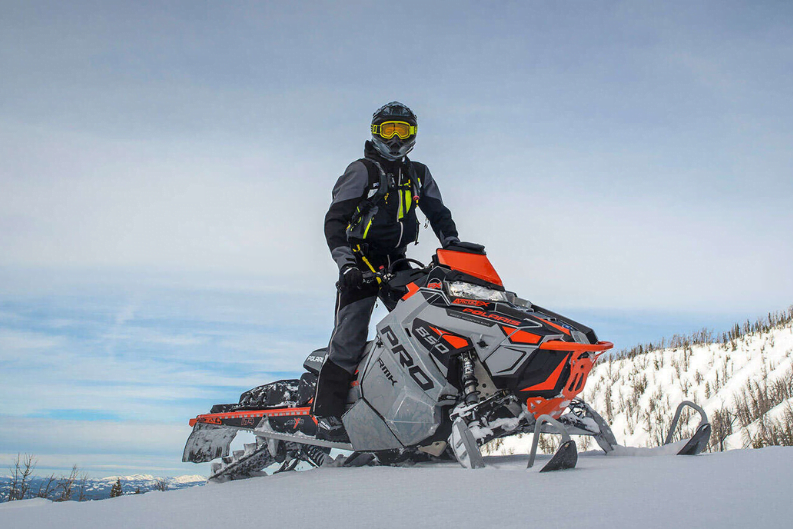12 Pre-Season Snowmobile Maintenance Checklist
Regular snowmobile maintenance is crucial for longevity and safe operations. It is important to understand the external parts of the snowmobile, but the internal components are also vital to know. You should take care of several must-do services at regular intervals to get peak performance and reliability from your sled.
I’ve learned a lot about snowmobile maintenance services over the years, and I know which are necessary to keep your sled in good shape. Here are some must-do maintenance tasks for a rider to take good care of a snowmobile and it will pay off if you know how to do it.
1. Pre-Ride Inspection
Before heading out on a snowmobile, it’s essential to inspect the machine to ensure that it’s in good working condition and won’t break down while you’re out on the trail. It only takes a few minutes and is very worth it. You’ll also learn more about snowmobile machines.

While many people don’t take the time to do this, You should look all over your machine for any signs of wear, damage, or things that need attention and always check for loose bolts, fluid levels, rust, worn belts, leaks, etc.
2. Check the Oil Level
If you have a 4-stroke snowmobile, you’ll need to change the oil and if you have a 2-stroke machine, you don’t need to change the oil because it is mixed with the fuel. Checking the oil level of a snowmobile is a simple process that can be done in just a few seconds. The oil tank is typically located under the hood or seat of the snowmobile.
First of all, you have to pull out the dipstick or oil-level sight glass and wipe it clean with a paper towel. Reinsert the dipstick or oil-level sight glass and remove it again to check the oil level. The oil level should be between the “minimum” and “maximum” marks on the dipstick or sight glass.
If the oil level is below the “minimum” mark, add the recommended type of snowmobile oil to the oil tank. Be sure not to overfill the oil tank. Once the oil level is correct, reinstall the dipstick and start the snowmobile and let it run for a few minutes.
It’s important to check the oil level regularly, especially before each ride, to ensure that the engine has sufficient oil for proper lubrication and it is the most vital step to follow in snowmobile maintenance.
3. Chaincase Oil and Adjustment
Another essential part of snowmobile maintenance is to change the oil within the chaincase about once every season to ensure it doesn’t degrade. Changing the chaincase oil is very simple and involves a drain and fill.
If the oil is really dirty, you know you’ve waited too long to replace it, so note your intervals and don’t go as long next time. You have to adjust the chain to the proper tension for a better and smoother ride.
4. Snowmobile Track Maintenance

Inspecting the track of a snowmobile is important for ensuring a safe ride and preventing damage to the machine.
Start by removing any snow, or debris from the track. The track should have consistent tread depth and there should be no exposed cords or signs of fraying. The track should be straight and aligned with the drive sprockets.
Finally, lubricate the track according to the manufacturer’s recommendations. This will increase the life of a snowmobile track.
5. Grease Suspension and Skidframe
Without Grease, you can expect premature wear and other damage that could have been prevented. So regular greasing of the suspension and skid frame is recommended.
Some riders will grease the skid frame as often as every other ride. If you ride on roads where they use road salt or other corrosive products then you should grease your snowmobile about every month during the season.
You just need a grease gun to do this job, and get underneath your sled and hit all the zerks until they are adequately greased.
6. Snowmobile Brakes Maintenance
It’s important to check the brakes regularly, especially before each ride, to ensure that they are in good condition for safe operation.
Look at the brake pads to make sure they are in good condition. The pads should be at least 1/8 inch thick and there should be no cracks or signs of excessive wear. The disc should be smooth and free from deep grooves or cracks and check the caliper as well. Always check the Brake lines and if you feel that they need to be changed then replace them.
Test the brakes to make sure they are working properly. If the brakes are not working properly, you may need to adjust the brake tension.
7. Inspect the Coolant System of a Snowmobile
The coolant system is another critical snowmobile maintenance item that should be inspected frequently. If you have a fan-cooled machine, you’ll want to ensure the coolant level is at the right mark and look for any leaks or damage.
If you have a fan-cooled machine, inspect the fan assembly, belts, and pulleys for any signs of
damage. You might need to replace a belt or fix a cracked assembly every so often. But you don’t want the fan to fail on the trail, so preventative measures are ideal here.
8. Snowmobile Filter Replacement
Your snowmobile has a couple of filters that should be changed so often. The fuel filter and air filter helps keep debris out of your engine and fuel system, and if these get clogged up, they will affect performance.
The fuel filter should be changed according to your manufacturer’s recommendations, and once a season or longer should be fine. The air filter can be cleaned instead of replaced using compressed air, but you’ll want to replace it if it gets too dirty.
9. Spark Plugs
The last thing you need on a fun winter afternoon is a snowmobile that’s unpredictable. Neglected spark plugs can give you a sluggish engine start and a less responsive motor. Spark plugs are built to withstand extreme temperatures and high impact. They torch the fuel mixture in the engine cylinders.
They can become spoiled from outrageous choking. This can cause the engine to run badly and eventually stop, To keep your snowmobile at peak performance, your spark plugs should be in good condition. so always carry spare spark plugs in your emergency kit.
10. Clutch and Drive Belt

The clutch cover should constantly be in place when using your snowmobile. Snowmobile clutches are exactly balanced and under pressure by strong springs and severe injury and damage can happen.
If unleashed improperly, therefore, only a qualified mechanic should adjust the clutches. You should inspect the clutch belts every season for any signs of wear and replace them when necessary.
As the drive belt starts to wear, you may notice poor performance, a Clutch cover, and drive belt” a loss of acceleration, slippage, or leaking from the belt. In these cases, the drive belt will need to be replaced. Always bring an extra drive belt that is in good shape.
When replacing the drive belt. Always follow the manufacturer’s suggestions summarized in your owner’s manual.
11. Snowmobile Exhaust System
This mainly involves a quick glance at the exhaust manifold beneath the sled. This can be part of your pre-ride inspection, but I always like to keep it in the regular checklist as well. If you notice any rust or gaps in the exhaust system, it’s better to take care of those sooner than later.
They aren’t going to get any better without repairs, and a broken exhaust not only makes your sled really noisy but can also limit performance pretty much.
12. Inspect Carbides/Wear Guards
You also want to inspect the carbides or wear guards on the bottom of your skis. When these get worn down, they can have a negative effect on the handling and control of your machine. This is an important safety issue that also affects performance.
Wear guards are pretty affordable and easy to replace, so learning how to do that job is a must for any DIYer. If you have carbides, you can sharpen them up in the shop and get extended use before it’s time for a replacement.
Conclusion
If you want to become a pro snowmobiler then you have to understand all these snowmobile maintenance services. It may seem a lot but these all are vital snowmobile maintenance tasks. Everything that we’ve discussed in this post will make sure that you have properly checked your snowmobile before going out.
Learn how to do all of these yourself. The biggest advantage of learning this will save a lot of money and you will understand how your sled operates.







